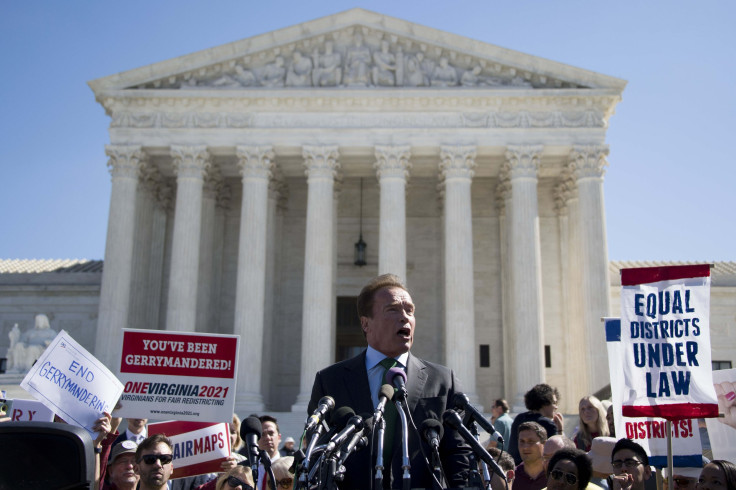What Is Gerrymandering?

A Supreme Court case could decide the future of gerrymandering, the practice of creating partisan advantage by manipulating district boundaries.
The term gerrymandering is derived from an 1812 incident in which Massachusetts Gov. Elbridge Gerry allowed a legislative map benefitting his own party to pass into law. The map included a district that looked like a salamander, hence creating the term gerrymander. Politicians from both parties have given the practice mixed reviews, but both parties have used it to tip power in their favor.
The constitutionality of gerrymandering was addressed on the Supreme Court level in 2004. The case, Vieth v. Jubelirer, brought into question a map that put Republicans at an advantage when electing congressional delegates in Pennsylvania. The Supreme Court ruled 5-4 that the alleged gerrymandering was not unconstitutional. Republican Justice Anthony Kennedy became the fifth vote necessary to tip the ruling, but he provided the possibility of revisiting the issue. The issue is currently being revisited at a Supreme Court level in Gill v. Whitford, a case that began in a Wisconsin lower court.
OP-ED: One of the most important Supreme Court cases about gerrymandering is about to be decided. Here's why it's so important. pic.twitter.com/y8Hbz6LiXu
— NowThis (@nowthisnews) October 3, 2017
In 2011, Wisconsin Republicans controlled both the legislature and governorship. The Wisconsin State Legislature passed Act 43, which allowed for redistricting of the state. The act also seemed to favor Republicans in state elections. The lead plaintiff in the case, William Whitford, a University of Wisconsin Law School professor emeritus, said the map does not correspond with the state’s electorate.
“Wisconsin’s Assembly bears no resemblance to its evenly split electorate. In 2012, Republicans won a supermajority of 60 seats (out of 99) while losing the statewide vote. In 2014 and 2016, Republicans extended their advantage to 63 and 64 seats, respectively, even though the statewide vote remained nearly tied,” Whitford said.
“Republicans thus wield legislative power unearned by their actual appeal to Wisconsin’s voters. This pro-Republican skew is no accident,” he added.
Beverly Gill, the state election board’s chair, maintained that “Act 43’s districts are consistent with the prior court-drawn maps.” In November 2016, a lower court ruled the Republican-drawn Wisconsin map was unconstitutional because of its partisan intent and partisan effect— basic gerrymandering. After the ruling, the state announced its plans to appeal to the Supreme Court.
The Supreme Court heard oral orguments Tuesday. Multiple political figures have spoken out against gerrymandering, including former California governor Arnold Schwarzenegger, who denounced the practice outside the Supreme Court House Tuesday. If the Supreme Court rules Wisconsin map unconstitutional, the practice of gerrymandering would most likely change in each state. The four liberal-leaning justices will likely vote to enforce the lower court’s decision against the Wisconsin plan, while the four conservative-leaning justices will likely vote to reverse the lower court’s decision. Like in Vieth v. Jubelier, Justice Anthony Kennedy could be the deciding vote in the case.
© Copyright IBTimes 2025. All rights reserved.





















